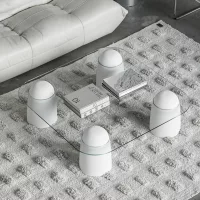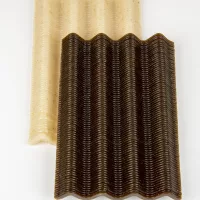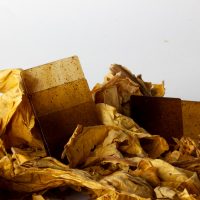Paper Production
Experience the transformative possibilities of paper waste with Fanocel. Fanocel utilises cellulose acetate derived from paper to create sustainable bio-composite alternatives. Embrace sustainability and unlock the creative potential of these innovative materials.
Transforming Paper
Paper production is undergoing a transformative shift—one that blends traditional craftsmanship with modern sustainability and material innovation. As the world moves toward more responsible consumption, the materials and methods we use to create everyday products, including paper, are being reimagined. Today’s paper production no longer relies solely on virgin wood pulp or resource-intensive processes; instead, it embraces eco-friendly alternatives that reduce waste, conserve natural resources, and support a circular economy. By repurposing agricultural by-products and plant-based waste, we’re able to develop high-performance materials that serve a wide range of design and functional needs. Innovations like Plant Waste, which uses advanced 3D spraying to turn organic matter into sculptural and durable forms, and Fanocel, a cellulose-based composite enhanced with natural dyes from agri-food residues, are setting new standards for sustainability. These materials not only reduce environmental impact but also offer versatility, strength, and aesthetic appeal—ushering in a new era for paper production where environmental responsibility and design excellence go hand in hand.
Plant Waste
Plant Waste is a pioneering sustainable material that transforms organic waste into high-value, eco-friendly products. By repurposing plant-based byproducts, it reduces landfill waste and promotes a circular economy. Using advanced 3D spraying technology, this material allows for the creation of intricate, sculptural furniture forms that blend innovation with sustainability. Despite its lightweight nature, it remains exceptionally sturdy, making it an ideal choice for durable, functional, and aesthetically striking furniture. As designers and businesses seek greener alternatives, our plant waste material sets a new standard—providing sustainability, design, and durability.
Fanocel
Introducing Fanocel, a sustainable alternative to plastic materials sourced from fossil fuels. Fanocel is a bio-composite material made from cellulose acetate and agri-food by-products. Derived from natural resources like cotton plants and wood fibers, cellulose acetate possesses water-repellent, elastic, durable, and non-toxic properties. Responsible dyes, created from agri-food by-products such as hemp leftovers, charcoal, and tobacco remnants, are used in the production process. Fanocel offers a versatile range of sustainable surfaces for the design sector, including flooring, wall panels, tiles, and more. Embrace the responsible and eco-friendly choice with Fanocel.
Versatility
Can be used in varied applications such as walls, floors and some external areas

Insulation
The natural properties of paper provide sound and thermal insulation

Sustainability
The fibres obtained from recycled paper or FSC certified forests and are coloured with natural pigments only

VEINS
Pigmented veining flows along the sides of the impasto, oriented by the action of gradual manual pressure, thus imbuing the charm of a minimal, frozen movement against vast neutral backgrounds.
Easily adapted to the greatest gamut of design solutions, Veins generates a spatiality that is unencumbered by colors and oriented toward the play of light.
Reminiscent of marble, of stone, of wood, of the mosses and lichens of Salento, of time that marks and makes its own the calcareous stone.
RUTS
Obtained by stretching the impasto first by hand and then with CNC machining, Ruts alternates between flat portions, reminiscent of stone, to rectangular sections to create a succession with a solid and fortunate rhythm.
The pace of its grooves can be more or less dense, continuous or interrupted, but in each of its versions and in all the different colours, Ruts reveals, thanks to the intervention of the machine, the material uniqueness of Paper Factor.
PIANO
The most versatile of the Paper Factor skins, Piano implies a handmade nature revealed in a subtle and elegant manner through its surfaces polished by machine. The levelling action of a pantograph acts on the material, stretched by hand and then dried, bringing out unusual and fascinating aesthetic games.
"Available" in all color interpretations, Piano is the most minimalist of the Paper Factor surfaces: its smooth skin, susceptible to the slightest imperfections, is an excellent starting point for establishing the discourses of the most diverse spaces, whether on a small or large scale.







